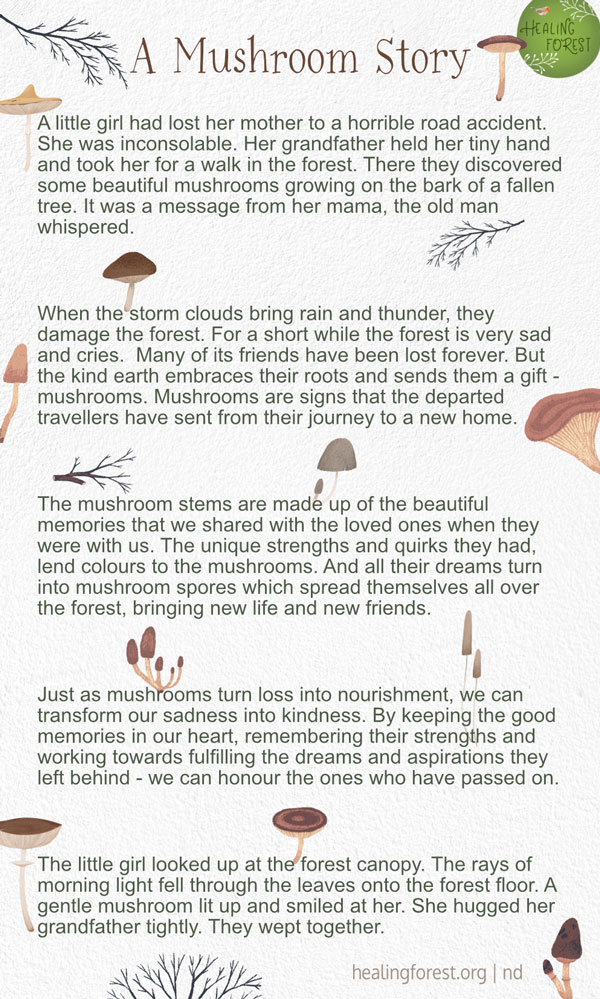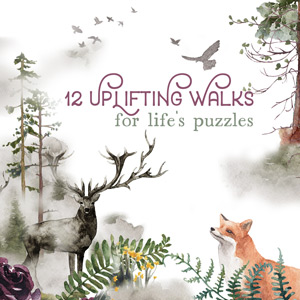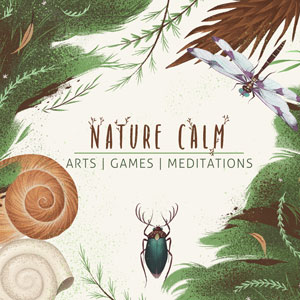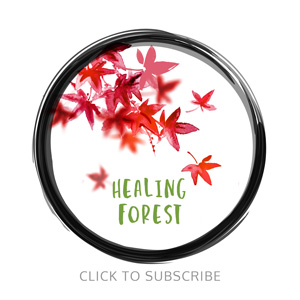Grief Is Love.
Grief is a way of holding on to love that we do not wish to renounce. The loss of something or someone we love can leave us feeling inconsolable. Even as we know that after the loss, the acute state of mourning will subside, something of the silent void will always remain. Akin to going on a pilgrimage, the journey of grieving is difficult and painful and what lies beyond cannot easily be fathomed
In this article we explore stories and activities from nature that can help us transform our grief and loss into meaningful actions. You will find useful ideas to express your emotions, reflect on your experiences, regain a sense of control, and honour the memory of the loved one.

Knowing how to deal with loss is an essential ability. Each one of us will need it at some point. Loss is both a universal and a deeply personal experience. In its wake, it brings about emotional suffering that can leave us feeling overwhelmed with sadness, despair, guilt and even anger. The world, the self, time – all feel out of joint. So how does one heal?
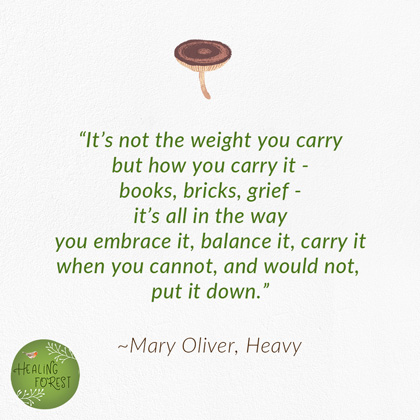
This article is part of our 12 magical walks to learn highly useful life-skills from nature.
Nature Play>>
A Mushroom Story
A little girl had lost her mother to a horrible road accident. She was inconsolable. Her grandfather held her tiny hand and took her for a walk in the forest. There they discovered some beautiful mushrooms growing on the bark of a fallen tree. It was a message from her mama, the old man whispered.
When the storm clouds bring rain and thunder, they damage the forest. For a short while the forest is very sad and cries. Many of its friends have been lost forever. But the kind earth embraces their roots and sends the forest a gift – mushrooms. Mushrooms are signs that the departed travellers have sent from their journey to a new home.
The mushroom stems represent the beautiful memories that we shared with the loved ones when they were with us. The unique strengths and quirks they had, lend colours to the mushrooms. And their aspirations and dreams turn into mushroom spores which spread themselves all over the forest, bringing new life and new friends.
Just as mushrooms turn loss into nourishment, we can transform our sadness into kindness. By keeping the good memories in our heart, remembering their strengths and working towards fulfilling the dreams and aspirations they left behind – we can honour the ones who have passed on.
The little girl looked up at the forest canopy. The rays of morning light fell through the leaves on to the forest floor. A gentle mushroom lit up and smiled at her. She hugged her grandfather tightly. They wept together.

* Download the mushroom story at the end of this article.
Turning Sadness Into Kindness
The stormy dark clouds of sadness can feel menacing. Yet, in nature we find that the advent of these clouds bears fresh showers that replenish the parched earth. When our sorrows threaten to wash over us, we can work towards making them into harbingers of kindness that brings the blossoms of life to others.
Here are a few activities that help us transform grief and loss.
1. Mindful Mushroom Walk
When you enter the woods to search for mushrooms you have to be alert, silent, and calm. By being mindful of your steps as you walk in the forest gently, you can turn this simple activity into an exercise in mindfulness.
While observing the breath is a very common mindfulness exercise, people who are going through a difficult phase in life find it very challenging because of troubling thoughts. Therefore, we should start with other senses first, especially when introducing mindfulness to beginners. Our visual sense is our strongest sense. Turning to nature to discover its many treasures fills us with deep calm.
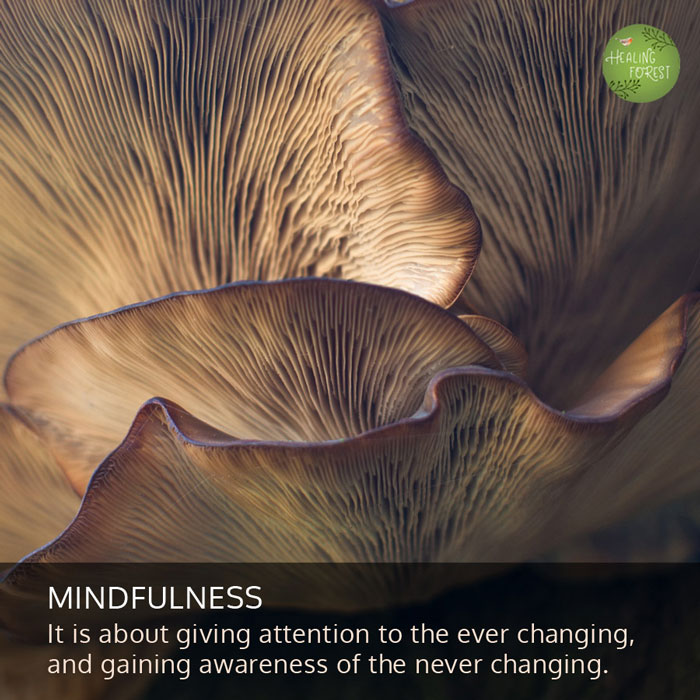
NOTE: Be sure to buy a good field guide for mushrooms from your area or go with an expert. Some basic instructions for Mushroom Walks, as per the Modern Forager are given below.
1. Tread Lightly. Don’t trample all the little mushrooms and potential mushrooms in your hunting ground.
2. Make a positive identification using more than one source wherever possible. Do not eat mushrooms with any features that contradict the description. “When in doubt, just leave the mushroom.”
3. Mature mushrooms release spores into the air that are essentially mushroom seeds. You can respect the spores by leaving some of the mushrooms untouched.
4. Use a porous and an open-air container for your mushrooms as you walk through the woods. Don’t use plastic bags — which can ruin your harvest anyways; look for mesh bags, baskets, buckets with holes drilled in them,
5. Don’t over-pick. It is courteous and considerate to leave mushrooms behind for another picker.
6. Micro-trash is a big problem! Try to leave none and collect some if you see any.
While mushrooms are typically associated with death and decay, they are in fact an integral part of renewal in the universal cycle of life. We recommend closing the mindfulness walk with a short mushroom circle meditation. Sitting in a circle of silence, the participants meditate upon the impermanence that permeates all things in nature – including our thoughts.
We have curated some more outdoor mindfulness activities for groups that you might find useful.
To live in this world
~ Mary Oliver, Blackwater Woods
you must be able
to do three things:
to love what is mortal;
to hold it
against your bones knowing
your own life depends on it;
and, when the time comes to let it go,
to let it go.
2. Creative Writing In Nature
Creative writing can be a helpful way to deal with grief for several reasons. Writing allows individuals to express their emotions and thoughts in a safe and private way. It can be challenging to find the right words to say when experiencing grief, but writing provides an outlet to put emotions into words and process them.
Here are some creative writing prompts to try on your nature walk. Choose the ones you feel comfortable with.
- Write a letter to the person you lost, expressing everything you wish you could say to them.
- Write about a specific memory you have of the person you lost, describing it in detail and how it makes you feel.
- Write a story or poem about the stages of grief you have gone through and how you have coped with each one.
- Write a tribute to the person you lost, highlighting their qualities and how they impacted your life.
- Write about a place that brings back memories of the person you lost, describing it in detail and how it makes you feel.
- Write about how your perspective on life and death has changed since experiencing loss.
Writing about grief allows us to reflect on our experiences and understand our emotions better. It can be a powerful tool for gaining insight into oneself and finding meaning in the loss. Grief can make individuals feel powerless and out of control. Writing provides a sense of control as it allows individuals to express their emotions and feelings in their own way and time. It is also a beautiful way to honour the memory of loved ones.

3. Acts Of Kindness
As night slowly paves the way for dawn, converting grief into acts of service can be a meaningful way to turn a difficult experience into something positive. These could involve checking in with friends or family members in need, performing random acts of kindness, volunteering our time, or making a donation to a charity.
Another great alternative for acts of kindness is to work with plants, trees, and gardens. Gardening and working with plants can be a calming and grounding experience that encourages mindfulness and relaxation. This can be particularly helpful for individuals dealing with the stress and anxiety that often comes with grief.
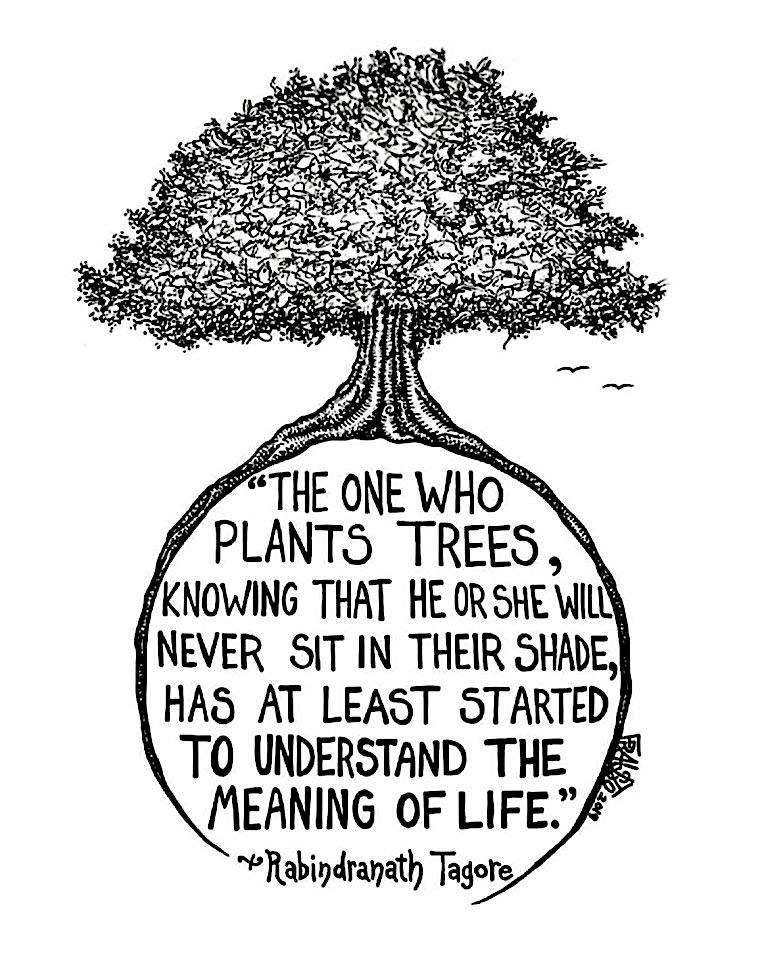
Plants and trees can become teachers and symbols for the grief process. For example, the act of pruning dead or dying branches can represent the process of letting go, while planting new seeds can represent the hope for new growth and new beginnings. A great project to undertake is creating your own meditation garden. A meditation garden is a place where you can retreat from the stress of daily life and find peace and tranquility through meditation or other contemplative practices. Here’s a useful note on how to create your own meditation garden.
Countries like Korea have taken the concept a step further with a unique ‘National Tree Burial Forest’. It is an eco-friendly way to send off the loved ones. Learn more about Korea and its Forest Bathing practice here.
Self-compassion is the heartbeat of all human understanding. Practising self-compassion entails giving ourselves permission to feel our emotions and attend to ourselves through self-care practices. When we reach outwards, it also helps restore our sense of connectedness in the web of life.

Sharing Grief
We all grieve in our own ways and in our own time. And often we have to support others in their journey. Therefore it is important to understand the way our mind deals with loss and pain.
In order to explain the process, the Swiss psychiatrist, Elisabeth Kubler-Ross, introduced the model of the five stages of grief in her 1969 book ‘On Death and Dying.’ The stages of grief, popularly described with the acronym D.A.B.D.A., are as follows:
- Denial: This stage can look like an inability to admit to the truth of what happened. The shock of the news can be so overwhelming that one might feel nothing or go numb, refusing to discuss the loss and isolating oneself from others who have accepted it. Denial aids in coping by allowing you to pace your feelings of grief and staggering its full impact on us. Once the denial and shock start to fade, feelings that you were suppressing begin to come to the surface and the healing process begins.
- Anger: In this phase, you might look to someone to blame others for the cause of your grief and may redirect your anger to close friends and family. Questions like “Why me?” or “Life is not fair!” keep coming up, as you find it incomprehensible how this could happen to you. If you are a person strong in faith, you might begin to question your belief in God : ‘Where is God? Why did he not protect me?” Anger is a natural step in healing. It has more energy than depression and can propel us into action, bridging you back to reality and to others.
- Bargaining: In bargaining, you try to convince yourself you can avoid the grief by negotiating with a higher power. You can find yourself wracked with guilt as a series of ‘What if’ scenarios pass through your mind.
- Depression: This is the stage in which the emptiness of the void that the loss has left us with is felt most acutely. The rupture or loss of a deep bond feels like a loss of a part of oneself. You might withdraw from life, feeling hopeless and despondent as the weight of sadness feels unbearable. You might not want to be around others and might even experience suicidal thoughts.
- Acceptance: In the final stage, you are able to acknowledge the loss, and begin the process of adjusting to the new reality. As your emotions begin to stabilise, the pain feels more bearable and the world begins to seem inhabitable again.
These steps are not linear, and we often cycle back and forth through the stages. Grief comes in waves, and coming to terms with loss requires self-compassion and understanding. Holding space for the difficult emotions that arise in oneself instead of escaping them is a vital part of healing. Accepting support and help from others can help us move forward towards recovery.

Loss is an inevitable part of the journey of life. In this journey, grief can usher in several invaluable lessons. It can teach us about the fragility of life.
Grief reminds us of the importance of our close relationships, urging us not to take them for granted. It takes us to a deeper appreciation for spending quality time with our loved ones and creating memories that can be cherished forever. It can teach us gratitude for what we have. Grief can bring home to us the realisation of our own resilience and inner strength to overcome challenges. It can prompt us to reflect on the meaning of our life, and strengthen our faith, thus becoming a catalyst for a transformation.
References and Contributors for this article: Deepti Sachdev, Poet & Psychologist | https://rootrisetherapyla.com/blog/2022/5-stages-of-grief | https://www.psycom.net/stages-of-grief |
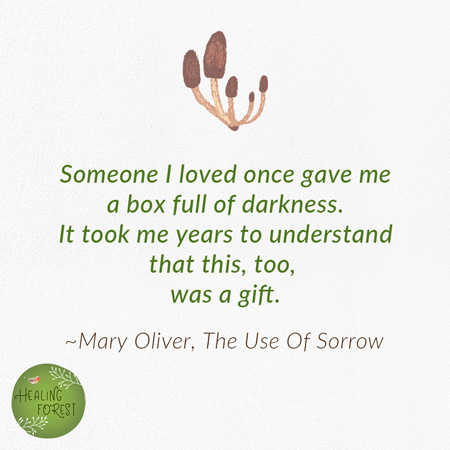
Create ripples of positive change in your life through nature.
Nature Calm>>
Healing Forest is a volunteer run project. Our goal is to bring people and forests closer to each other through creativity and mindfulness. The aim is simple. Helping people heal. Helping forests heal.
Do share this post, so it reaches where it’s needed. | Link to download the mushroom story.
